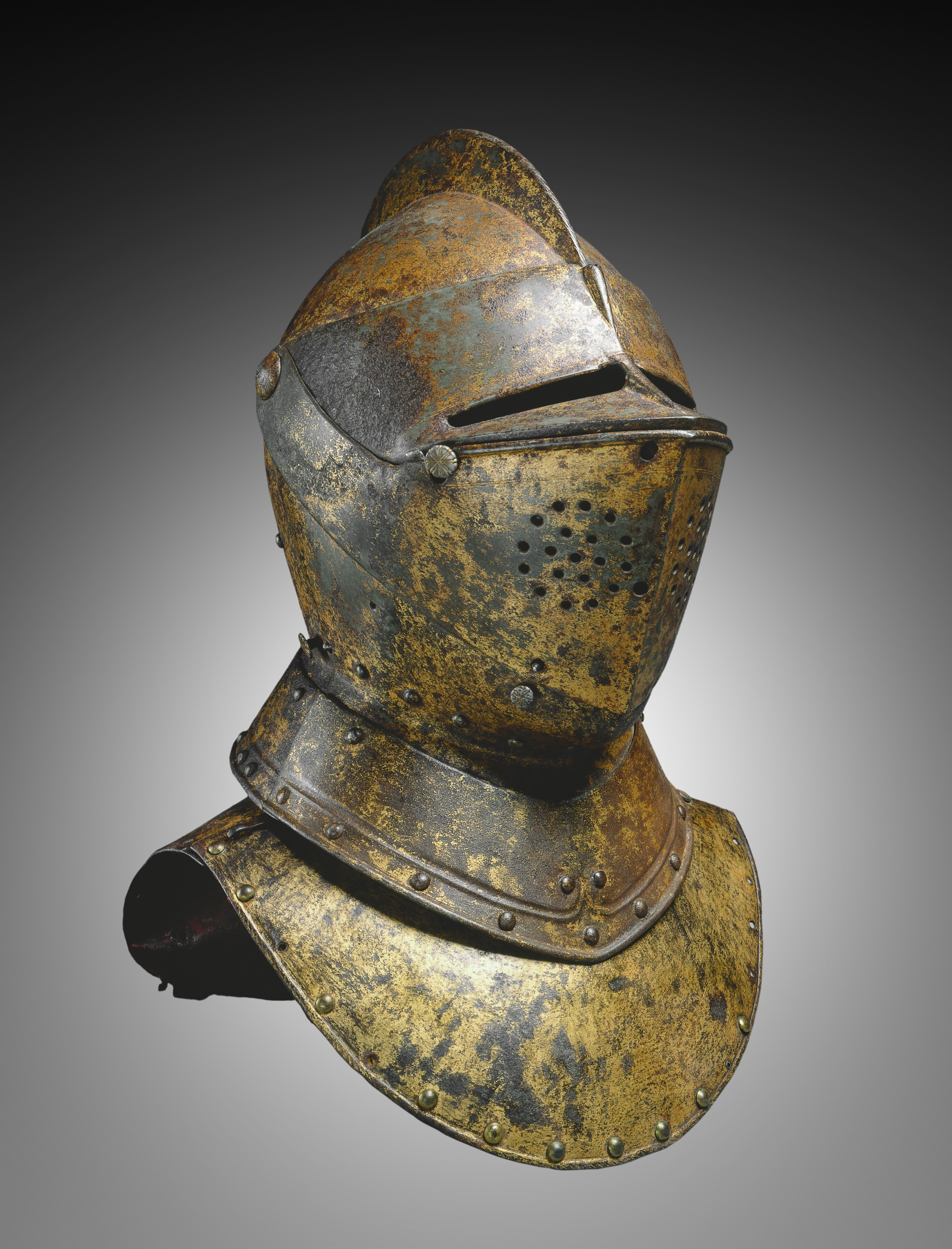The Cleveland Museum of Art
Collection Online as of April 26, 2024

Close Helmet (from a funerary achievement?)
c.1590–1625
Overall: 33 x 34 x 21.3 cm (13 x 13 3/8 x 8 3/8 in.)
Gift of Mr. and Mrs. John L. Severance 1916.1787
Location: 210A Armor Court
Did You Know?
This helmet was decorated with a technique known as fire-gilding, an incredibly toxic process involving mercury that produced a gold finish, now worn away.Description
This helmet was originally intended for field use. Later, it seems to have served a funerary purpose, probably as an ornament (known as a funerary achievement) suspended over the church tomb of an unidentified knight. As such, it would have been a rich and imposing symbol of the dead knight's social rank and personal authority.- ?-1916Frank Gair Macomber, Boston, MA, sold to the Cleveland Museum of Art1916-The Cleveland Museum of Art, Cleveland, OH
- Gilchrist, Helen Ives. A Catalogue of the Collection of Arms & Armor Presented to the Cleveland Museum of Art by Mr. and Mrs. John Long Severance; 1916-1923. Cleveland: The Cleveland Museum of Art, 1924. Mentioned: p. 49, B21 archive.orgFliegel, Stephen N. Arms and Armor: The Cleveland Museum of Art. [Cleveland, Ohio]: The Museum, 1998. p. 84, 165; cat. no. 57Fliegel, Stephen N. Arms & Armor: The Cleveland Museum of Art. [Cleveland, Ohio]: Cleveland Museum of Art, 2007. p. 100, 185, cat no. 64Dobson, Chris. Beaten Black and Blue: The Myth of the Medieval Knight in Shining Armour. Sant'Albano Stura, Italy: Chris Dobson, 2023. Mentioned and Reproduced: p. 286-287, fig. 333
- Armor Court Reinstallation. The Cleveland Museum of Art (organizer).The Cleveland Museum of Art (09/10/1998); "Armor Court Reinstallation"
- {{cite web|title=Close Helmet (from a funerary achievement?)|url=false|author=|year=c.1590–1625|access-date=26 April 2024|publisher=Cleveland Museum of Art}}
Source URL:
https://www.clevelandart.org/art/1916.1787